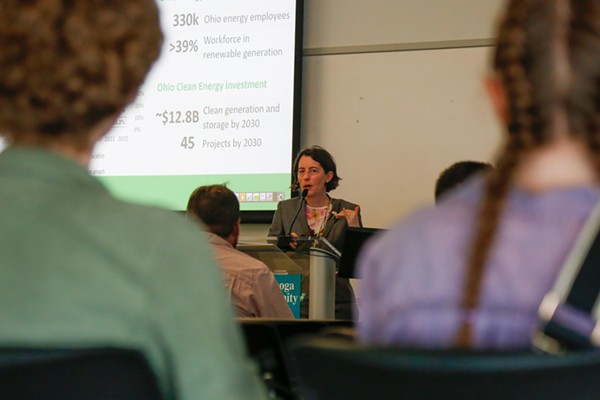Cleveland, OH
Cleveland Guardians Announce 2024 Cactus League Schedule

Cleveland, OH – The Cleveland Guardians today announced the club’s 2024 Spring Training schedule with the Cactus League opener scheduled for February 24 as the home team against the Cincinnati Reds at Goodyear Ballpark.
The Guardians will play 15 home games at Goodyear Ballpark and 17 games overall, as they take on the Cincinnati Reds twice as the visiting team during the 2024 spring slate. Cleveland will partake in two split-squads, facing Chicago-NL (away) / San Francisco (home) on March 3, and Colorado (away) / Milwaukee (home) on March 19. The Guardians wrap up their spring schedule with two exhibition games at Chase Field against Arizona (March 25-26) before starting the 2024 regular season with a 9-game road trip that features two West Coast series.
The Guards will host seven weekend games at Goodyear Ballpark:
Cleveland opens the 2024 season at Oakland on Thursday, March 28. The Guardians Home Opener is scheduled for Monday, April 8 against Chicago-AL.

Cleveland, OH
Feds sue Middleburg Heights anti-vax doctor, accuse her of failing to pay $650K in taxes, fees

Cleveland, OH
Air Quality Alert issued for northeast Ohio

CLEVELAND — The Northeast Ohio Areawide Coordinating Agency has issued an Air Quality Alert for a large portion of northeast Ohio on Tuesday due to the potential of ground level ozone to reach harmful levels.
The alert is for Ashtabula, Cuyahoga, Geauga, Lake, Lorain, Medina, Portage and Summit counties. Air quality is expected to reach “unhealthy for sensitive groups” for the day, with highs approaching 90 in many areas.
The main threat is the ozone gas, which is a lung irritant which can lead to severe respiratory issues. People who are the elderly, young children and teens, the immunocompromised and those with lung issues, such as asthma, are recommended to reduce their time outside during this time.
The American Lung Association recommended these practices to reduce the health effects of air pollution:
- Checking air quality forecasts
- Limiting exercise outdoors when pollution is high
- Using less energy at home, this helps reduce the amount of air pollution by curbing greenhouse gases
- Walk, bike or carpool to reduce car emissions
- Use hand powered or electric lawn equipment rather than fuel powered
To check your air quality forecast, click here. For more information on health risks from air pollution, click here.
Cleveland, OH
Ohio to Spend $169 Million Building Electric Vehicle Charging Stations Near Highways in Next Five Years

Mark Oprea
Electric cars outside Tri-C’s Advanced Technology Training Center on Wednesday. Northeast Ohio could see a dozen new charging stations in the next five years, thanks to a federal grant program.
Ohio should be an easier state to drive in for Tesla, Rivian and other EV owners by the end of the decade.
That’s the overall goal underlying an announcement of a massive funding package by state electric vehicle advocates Wednesday morning, one that intends to inject hundreds of millions of dollars into bringing Ohio’s lackluster EV charging station stock up to speed.
And the data doesn’t lie.
Just in April, a report from S&P Global Mobility ranked Cleveland well near the bottom of the top 50 U.S. cities for registered owners of electric vehicles, a stat owed to both the high point of entry for said vehicles and, undeniably, the deficit of charging stations across the state.
On Wednesday, in a lecture room at Tri-C’s Advanced Technology Training Center , Grace Gallucci, the director of the Northeast Ohio Area Coordinating Agency, and experts on alternative energy infrastructure spoke promisingly to a packed room about how $169 million in federal grant dollars would be doled out across Ohio in the next five years.
Priorities in that spending money—spread out amongst NOACA, the Sustainable Ohio Public Energy Council and the Ohio Department of Transportation—were made clear: power stations for Ohio EV drivers should be conveniently placed. That is to, one day, have 9 out of 10 Ohioans within a 25-mile radius of an EV charging station.
“We have a pretty extensive alternative fuel corridor network,” Breanna Badanes, a spokesperson for DriveOhio, said. “But it’s clear that there are still plenty of gaps throughout the state, particularly in Southern Ohio, some in Northwestern Ohio. So that’s kind of what we’re here to talk about: planning for these future phases when we can build outside of the alternative fuel corridors, what we still need to prioritize as a state.”

Mark Oprea
Breanna Badanes, a spokesperson for DriveOhio, at Tri-C on Wednesday.
Ohio currently has 1,578 stations in sum, those mostly on private land and relatively close to highways and shopping centers. Many are in areas with higher income levels, an issue of equity speakers on Wednesday said its charging station spending plans to address.
As of June, there a dozen new charging stations planned in the greater Northeast Ohio area, and only one so far in construction, a station west of Akron. A Pilot EV station, funded in part with federal dollars, opened off I-71 in Columbus in December.
These future stations, for which $56 million has been spent thus far, follow guidelines listed by the National Electric Vehicle Infrastructure program, which dictates a state must build a station every 50 miles off major transportation corridors and include at least four Fast Chargers of at least 600 kilowatts of combined power.
Katie Zehnder, vice president at HNTB, a transportation infrastructure firm, reminded attendees on Wednesday that Ohio’s push to become more EV-friendly is based on—just like bike lines and crosswalks—the premise that infrastructure creates culture.
The same goes, she said, for encouraging more electric usage at commercial enterprises, such as equipping UPS and DHL trucks with the on-road power they need to make the switch sustainable.
A recent survey of freight riders testing out new electric trucks showed Drive Ohio that driving EVs led to employees taking fewer sick days, less gas engine vibration, and led to “less back issues.”
“Which I was admittedly kind of shocked by at the time,” Zehnder said about the study. “Ride and drives, just exposure to EVs, that’s really the best thing. Because once people get into these vehicles, they really seem to enjoy them.”
Subscribe to Cleveland Scene newsletters.
Follow us: Google News | NewsBreak | Reddit | Instagram | Facebook | Twitter
-

 News1 week ago
News1 week agoIsrael used a U.S.-made bomb in a deadly U.N. school strike in Gaza
-

 World1 week ago
World1 week agoRussia-Ukraine war: List of key events, day 833
-

 Politics1 week ago
Politics1 week agoGeorge Clooney called White House to complain about Biden’s criticism of ICC and defend wife’s work: report
-

 Politics1 week ago
Politics1 week agoNewson, Dem leaders try to negotiate Prop 47 reform off California ballots, as GOP wants to let voters decide
-

 World1 week ago
World1 week ago‘Bloody policies’: Bodies of 11 refugees and migrants recovered off Libya
-

 Politics1 week ago
Politics1 week agoEmbattled Biden border order loaded with loopholes 'to drive a truck through': critics
-

 World1 week ago
World1 week agoDozens killed near Sudan’s capital as UN warns of soaring displacement
-

 World1 week ago
World1 week agoVideo: U.S. Official Responds to Israeli Strike on a U.N. School in Gaza




















